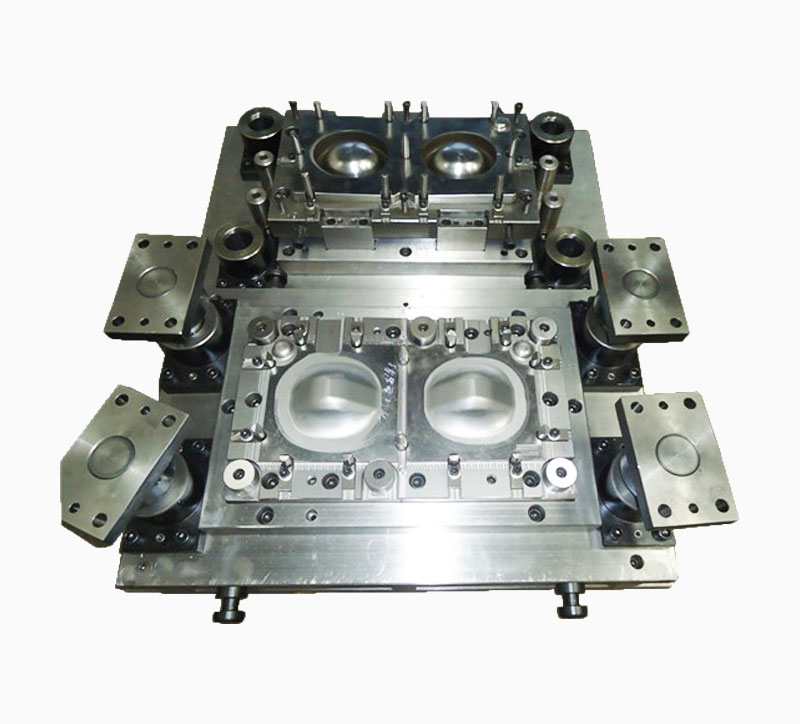1. Development The various things and products that we […]
1. Development
The various things and products that we produce and use in our daily life range from the base of the machine tool, the shell of the fuselage, to the shell of a screw, button, and various household appliances, all of which are closely related to the mold. The shape of the mold determines the shape of these products, and the processing quality and precision of the mold determine the quality of these products. Because of the different materials, appearance, standards and uses of various products, the molds are divided into non-plastic molds such as casting molds, forging molds, die casting molds, stamping molds, and plastic molds.
In recent years, with the rapid development of the plastic industry and the continuous improvement of strength and precision of general and engineering plastics, the scope of use of plastic products is also expanding, such as: household appliances, instruments, construction equipment, automotive industry, In many fields such as daily hardware, the share of plastic products is rapidly increasing. A well-planned plastic part can often replace multiple traditional metal parts. The trend of plasticizing industrial products and household products is increasing.

2. Meaning
General definition of mold: In industrial production, various types of presses and special things mounted on the press are used to produce metal or non-metallic materials to produce parts or products of the desired shape under pressure. Such special things are collectively called molds.
Description of the injection molding process: The mold is a thing that produces plastic products. It is composed of several sets of parts, and there is a molding cavity in this combination. During injection molding, the mold is clamped on the injection molding machine, molten plastic is injected into the molding cavity, and cooled and shaped in the cavity, then the upper and lower molds are separated, and the product is ejected from the mold cavity through the ejection system, and the mold is finally closed. For the next injection, the entire injection process is cyclic.
3. Classification
A. Injection molding die-TV shell, keyboard buttons, electronic products, computer peripheral plastic products, toys, household goods (the most widely used)
B. Blowing mold-beverage bottle
C. Compression molding die-bakelite switch, scientific porcelain dishes
D. Transfer molding die-integrated circuit products
E. Kneading forming mold-glue tube, plastic bag
F. Thermoforming mold-transparent molded packaging shell
G. Rotary forming die-soft doll doll toy
According to the different casting system, molds can be divided into three categories:
(1) Large nozzle mold: the runner and gate are on the parting line, and the product is demolded together with the product when the mold is opened. The planning is the simplest, easy to process, and the cost is low, so many people use the large nozzle system to operate.
(2) Fine nozzle mold: The runner and gate are not on the parting line, and are generally directly on the product. Therefore, it is necessary to plan an additional set of nozzle parting lines. The planning is more complicated and the processing is more difficult. Generally, it is selected according to the product requirements. Fine nozzle system.
(3) Warm runner mold: The structure of this type of mold is roughly the same as that of the fine nozzle. The biggest difference is that the runner is in one or more warm runner plates and hot mouths with constant temperature. There is no cold material demolding, runner and pouring The mouth is directly on the product, so the runner does not need to be demolded. This system is also called a waterless system, which can save raw materials. It is suitable for the situation where the raw materials are expensive and the product requirements are high. Planning and processing are difficult, and the mold cost is high.
The warm runner system, also known as the hot runner system, is mainly composed of a hot gate sleeve, a hot runner plate, and a temperature-controlled electric box. Our common warm runner system has two methods: single-point hot gate and multi-point hot gate. Single-point hot gate is to use a single hot gate sleeve to directly inject molten plastic into the cavity, it is suitable for a single cavity single gate plastic mold; multi-point hot gate is through the hot runner plate to branch the molten material into each Sub-heating gate sleeve and then enter the cavity, it is suitable for single cavity multi-point feeding or multi-cavity mold.
Please Leave Your Email Or Phone Number,So We Can Contact You As Soon As Possible
Contact us
Taizhou Booling Mould Co., Ltd. is a famous China Plastic Moulds Manufacturers and Extrusion Blow Moulding factory,we produces and deals with various injection mould,extrustion blow moulds and plastic mould machinery,etc.



 Languages
Languages